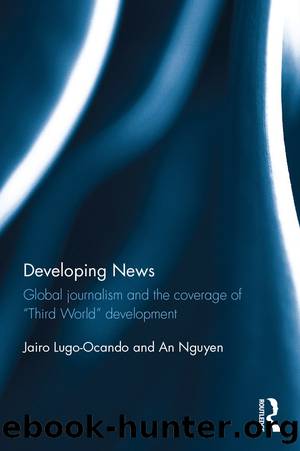Developing News by Jairo Lugo-Ocando An Nguyen

Author:Jairo Lugo-Ocando, An Nguyen [Jairo Lugo-Ocando, An Nguyen]
Language: eng
Format: epub
ISBN: 9780367427238
Barnesnoble:
Publisher: Taylor & Francis
Published: 2019-10-07T00:00:00+00:00
The feminisation of poverty
Gender in development discourses has moved in a more or less positive direction alongside a process called the âfeminisationâ of poverty in the past decades (Fukuda-Parr, 1999; Pearce, 1978). Introduced in the 1970s, this feminisation refers to the recognition in both policy discourses and practices that women and women-headed families constitute an increasingly disproportionate percentage of the worldâs poor due to gender inequality in resources, property rights, opportunities, capabilities and freedoms (Medeiro & Costa, 2008). Prior to its introduction, according to Kabeer (1994:1â2), women were hardly seen as a âconstituency of developmentâ: the UN declaration of the First Development Decade (1961â1970), for example, âwas devoid of any specific reference to womenâ. They got a brief mention in the declaration for the second international development decadeâs strategy and were âfurther spelt out in the strategy for the 1980sâ, in which they were declared as âagents and beneficiaries in all sectors and at all levels of the development processâ (1994:1â2).
The feminisation of poverty took off in the 1990s thanks to the work of the agencies of the UN, which vowed to better understand womenâs problems in altered priorities and to empower them with more opportunities to produce economic outputs, social progress and equality. A crucial landmark is the call for womenâs empowerment in the fifth annual report on human development by the UN Development Programme, which urges the UN system and the rest of the international community to recognise and address the extraordinary contribution to society that women make through âunpaid workâ and informal labour (UNDP, 1995). The report introduced the Gender Empowerment Measure index, with three dimensions: political participation and decision making (e.g. womenâs access to parliament seats); economic participation and decision making (e.g. womenâs access to administrative, managerial, professional and technical jobs); and power over economic resources (e.g. womenâs household income share). In the same year, according to Sylvia Chant (2012), âthe adoption of gender equality as a strategy for development effectiveness reached an apogeeâ through the World Bankâs Enhancing Womenâs Participation in Economic Development publication (1995). This publication promotes a âsmart economicsâ approach to gender equality, setting the stage for most of the Bankâs gender and development agenda and action since then (Chant, 2012). Accordingly, âinvesting in women is critical for poverty reductionâ because âit speeds economic development by raising productivity and promoting the more efficient use of resources; it produces significant social returns, improving child survival and reducing fertility, and it has considerable inter-generational pay-offsâ (World Bank, 1995:22, as quoted in Chant, 2012:3).
Feminisation brought gender issues to an increasing presence in development news. For example, a simple search for news on womenâs empowerment in all UK broadsheets found a total of 996 relevant stories, with the first appearing in 1991. Such coverage has gradually increased over time and become a more present news subject in recent years, with one-fifth of stories (196) being published in 2015 alone. Thanks to the feminisation of poverty and its associated development policy, gender justice has been used extensively in the news to signify and justify the need for intervention.
Download
This site does not store any files on its server. We only index and link to content provided by other sites. Please contact the content providers to delete copyright contents if any and email us, we'll remove relevant links or contents immediately.
Asking the Right Questions: A Guide to Critical Thinking by M. Neil Browne & Stuart M. Keeley(5572)
Autoboyography by Christina Lauren(5154)
Eat That Frog! by Brian Tracy(4377)
Dialogue by Robert McKee(4271)
Sticky Fingers by Joe Hagan(4060)
Journeys Out of the Body by Robert Monroe(3535)
Annapurna by Maurice Herzog(3395)
Full Circle by Michael Palin(3346)
Schaum's Quick Guide to Writing Great Short Stories by Margaret Lucke(3278)
Elements of Style 2017 by Richard De A'Morelli(3278)
The Art of Dramatic Writing: Its Basis in the Creative Interpretation of Human Motives by Egri Lajos(2944)
Why I Write by George Orwell(2849)
The Diviners by Libba Bray(2840)
In Patagonia by Bruce Chatwin(2829)
The Mental Game of Writing: How to Overcome Obstacles, Stay Creative and Productive, and Free Your Mind for Success by James Scott Bell(2816)
The Fight by Norman Mailer(2793)
Atlas Obscura by Joshua Foer(2757)
Venice by Jan Morris(2494)
The Elements of Style by William Strunk and E. B. White(2413)
